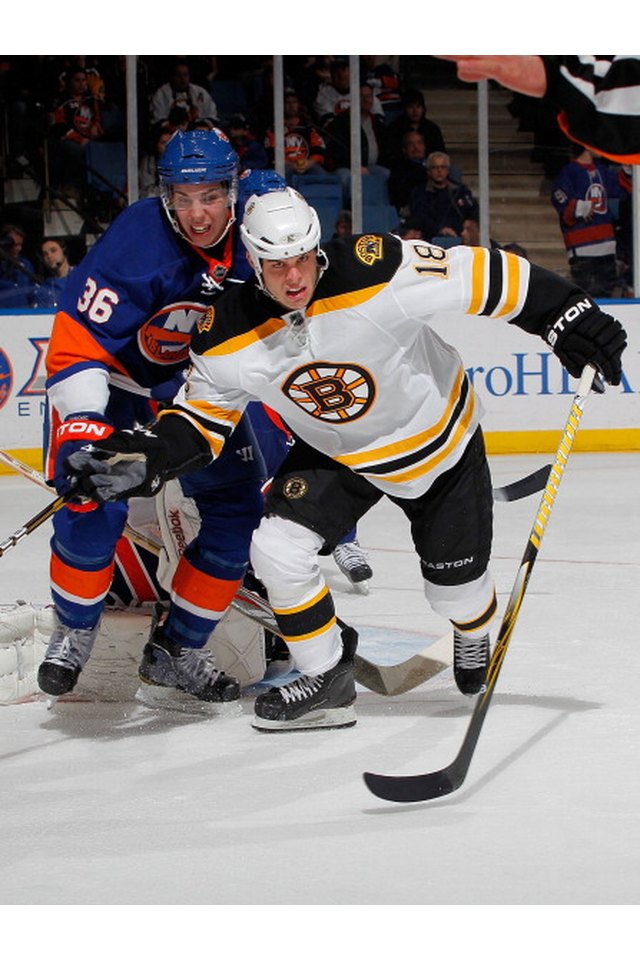Why Can't Hockey Players Pick Up Their Stick?

Ice hockey is a game of skating speed, aggressiveness, stickhandling, shooting and passing. In the hands of the right player, a hockey stick can pass a puck 60 feet right on to the tape of another player's stick blade. That same stick may be able to fire a puck at 100 miles per hour or better or maneuver the puck through the smallest of openings. However, when a player loses his stick, he may make no attempt to pick it up.
Broken Stick
In organized hockey, you cannot play with a broken stick. A player may line up at the blue line, accept a pass from his teammate and unleash a powerful slapshot. At the moment before impact with the puck, his stick slams into the ice and the stick blade breaks. The player must immediately drop the part of the stick that remains in his hand and either get a new stick or return to the bench. Players cannot play with broken sticks because they are dangerous. A player who has a broken stick in his hand could injure himself, a teammate or an opponent if he gets checked with the remnant in his hand.
Slash
A player may try to knock the puck off his opponent's stick blade with a poke check. If he misses the blade, he could hit the shaft of the stick with a slashing motion. That could break his opponent's stick. This is a penalty on the part of the player who broke his opponent's stick. He gets two minutes in the penalty box for slashing. However, if the slash broke the opponent's stick, that player must drop the broken part of the stick immediately. If he knowingly plays with a broken stick, he also could receive a penalty.
Dropped Stick
A player might drop his stick while attempting shoot, pass or stick handle. In this case, a player can legally pick up his stick and continue to play. However, if in the process of dropping it, the stick breaks, the player cannot pick it up and use it again. The player is better off leaving the stick on the ice and returning to the bench to pick up a new one because playing with a broken stick results in a two-minute penalty.
Composite Sticks
Prior to the 1990s, most sticks were made out of wood. They were two pieces of wood -- the shaft and the blade -- that were glued together. Most were fairly solid and did not break often. However, as aluminum alloy sticks became more popular -- they are lighter and stronger and allow a shooter to get more velocity on his shot -- the incidence of broken sticks increased dramatically. Players often found themselves with half a stick in their hand. As a result, rules were put in place to keep players from skating or playing with broken sticks.
References
Writer Bio
Steve Silverman is an award-winning writer, covering sports since 1980. Silverman authored The Minnesota Vikings: The Good, The Bad and The Ugly and Who's Better, Who's Best in Football -- The Top 60 Players of All-Time, among others, and placed in the Pro Football Writers of America awards three times. Silverman holds a Master of Science in journalism from the Medill School of Journalism.
